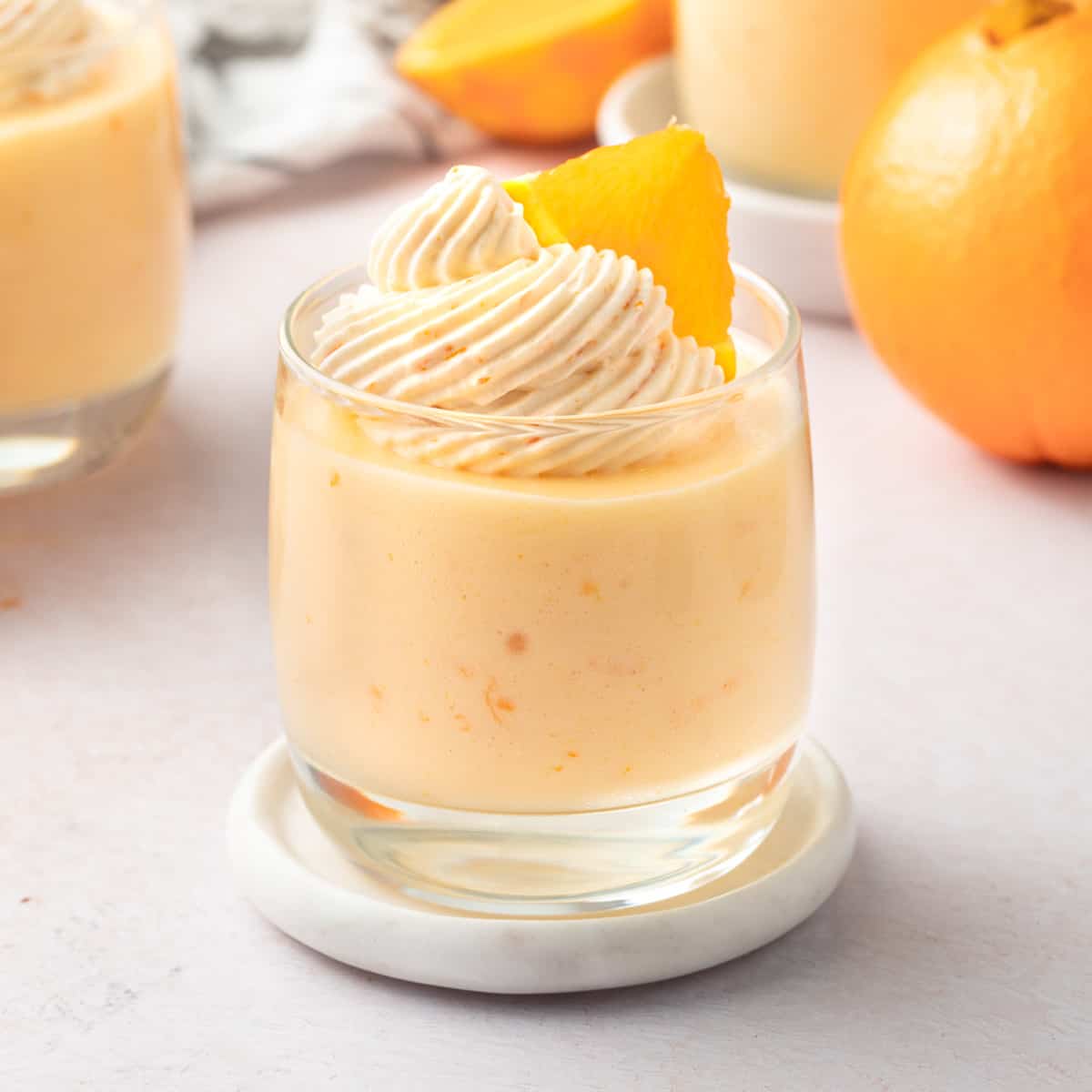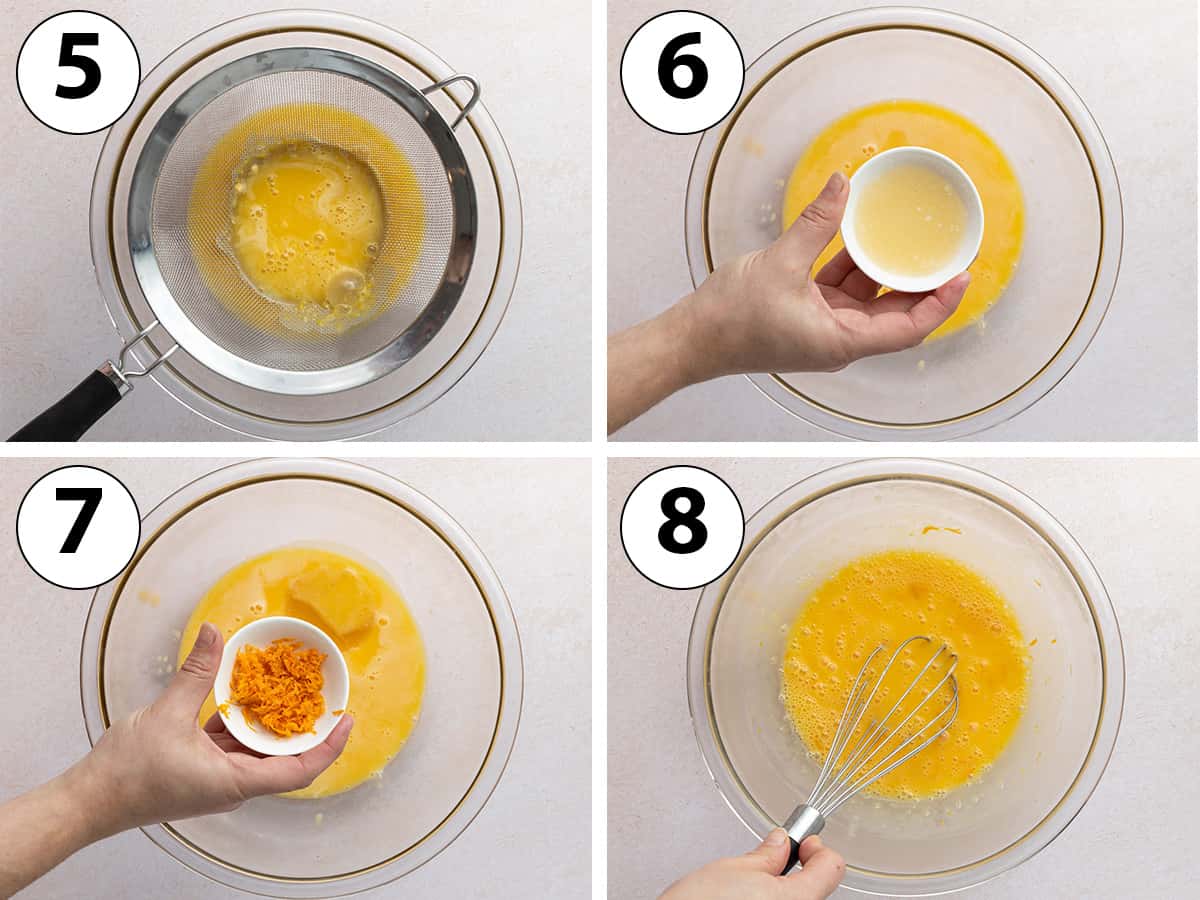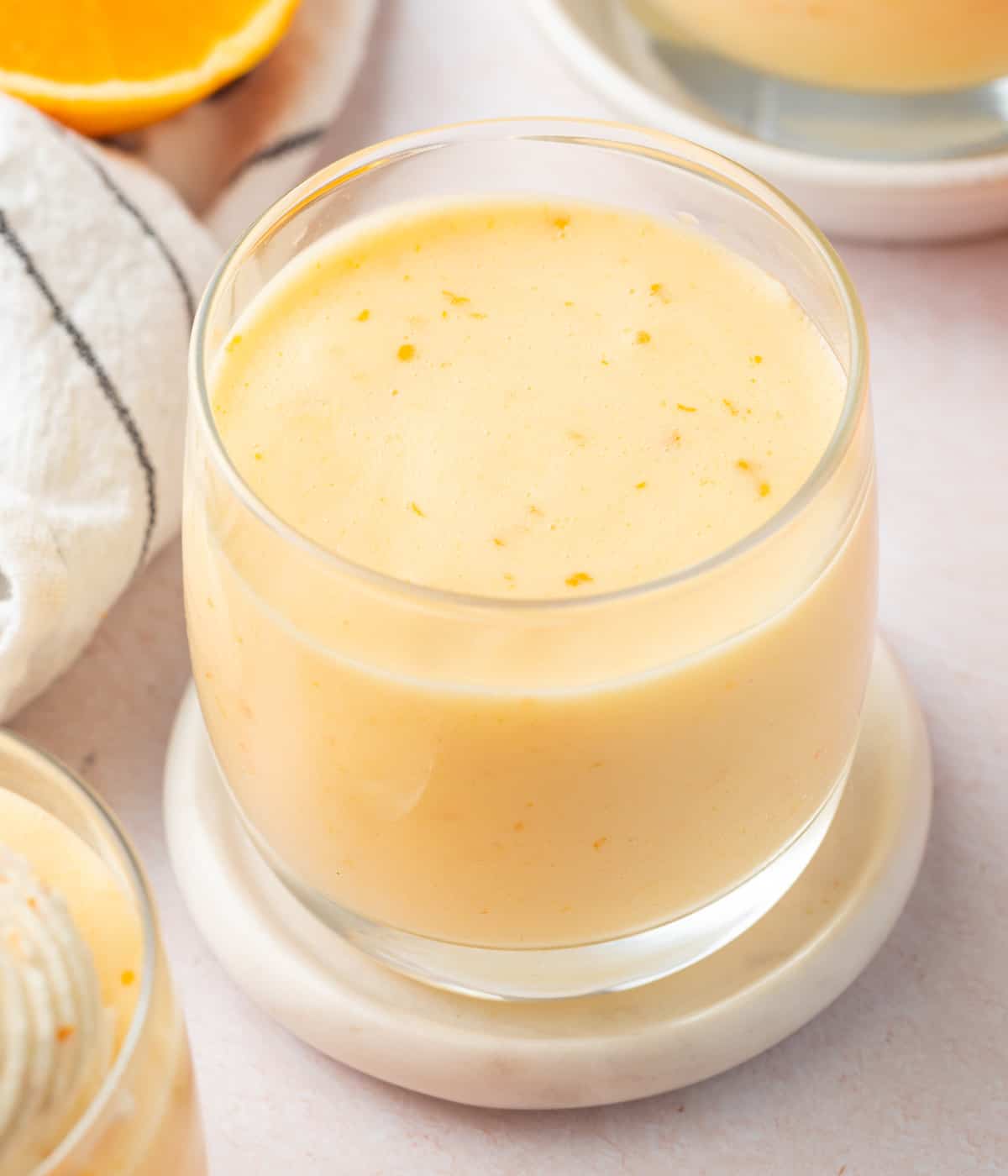These Orange Mousse Cups are a deliciously light, fluffy and fresh dessert. They are easy to prepare with 4 ingredients only and the perfect make-ahead dessert for a dinner party or special occasion! Why we love this recipe If...
These Orange Mousse Cups are a deliciously light, fluffy and fresh dessert. They are easy to prepare with 4 ingredients only and the perfect make-ahead dessert for a dinner party or special occasion!

Why we love this recipe
If you are looking for a dessert that is simple enough to prepare but looks super impressive, these creamy Orange Mousse Cups are for you!
The 4 ingredient dessert requires no baking and can be prepared in advance. It has a deliciously fluffy texture and is packed with fresh orange flavours. Simply perfect to serve at the end of a dinner party, for the Holidays or special occasion!
Want to try something a bit different? Check out my Chocolate Orange Mousse recipe!
What is a mousse
A mousse is a sweet or savoury preparation that is known for its light and airy texture. The French word "mousse" translates to "foam" in reference to the fluffy aspect of the dish.
A mousse is generally created by folding a whipped element - usually either whipped cream or whipped egg whites - into a flavoured base.
Ingredients

Scroll down to recipe card below for all quantities
For the Orange Mousse:
Sugar: caster sugar or superfine granulated sugar. You will use half of the sugar with the egg yolk mixture and the rest to whip the egg whites. Eggs: large eggs at room temperature, with egg yolks and egg whites separated. Because the egg whites are not cooked, it is highly recommended to use pasteurised eggs. Orange: we are using both the fresh orange juice and orange zest to add as much citrus flavour as possible. Avoid using the white part of the orange rind that will add bitterness to the dessert. Gelatine: I used gelatine powder rehydrated in cold water but you can use some gelatine sheets / leaves instead. See FAQs section below for substitution.For the Orange Whipped Cream (optional):
Thickened / Heavy Cream (heavy whipping cream): make sure to use a cream that has a at least a 30% fat content. Anything with less fat will not whip properly and won't hold its shape once whipped. Icing or Powdered Sugar: I used a minimal amount of sugar in this topping to balance the flavour of the dessert. If you prefer something sweeter, feel free to increase the sugar quantity. Orange Zest: a simple way to boost the orange flavours of the dessert.How to make Orange Mousse step-by-step
1. Cooking the Juice & Yolk Mixture

Before starting the recipe, prepare the ingredients and process them as required: zest and juice the oranges, separate the egg yolks and egg whites and rehydrate the gelatin powder in cold water.
Photo 1: Place the egg yolks and half of the caster sugar in a small saucepan. Photo 2: Whisk until combined. Photo 3: Add the orange juice and whisk well until smooth. Photo 4: Turn on low heat and gently cook on the stove while continuously stirring with a heat-proof spatula. Cook for 5 to 10 minutes, or until the egg and orange mixture has slightly thickened and coats the bottom of a spoon.Ideally, use a kitchen thermometer to cook the eggs to the right temperature: between 82 and 84 degrees Celsius (180 to 183 degrees Fahrenheit). At this temperature, the egg yolks are safely cooked but haven't started to curdle yet.
The exact cooking time can vary based on the size of your pan and stove temperature. Make sure the mixture does not boil or you risk overcooking the eggs, which will result in a chunky, curdled mixture.
We are essentially making an orange "crème anglaise" or custard base here, where the traditional milk or cream has been replaced with orange juice.
2. Adding the gelatine and zest

The exact time will depend on the size of the bowl and the temperature of your fridge. As a reference, gelatine will set once the temperature drops below around 40 degrees Celsius.
3. Folding in the whipped egg whites

Using a whisk to integrate a little bit of the egg whites at first will deflate them slightly. But will help thicken the mixture and make it easier to fold in the rest of the egg whites.
Photo 11: Switch to a spatula and gently fold in the rest of the whipped egg whites in 3 or 4 times. Stop folding as soon as you can't see any of the egg whites or you might over-mix the mousse and deflate it. Photo 12: Once the egg whites are all integrated, you should get a thin, light and creamy texture. It will resemble more of a custard or pudding than a mousse at this point - that's normal! The texture will change as the mousse sets in the fridge. Pour the orange mousse into serving cups, ramekins or a large serving dish (if you want to serve the mousse as a large dessert rather than an individual one). Place in the fridge to chill and set for at least 3 to 4 hours, preferably overnight. Optionally once set, prepare the orange whipped cream topping. Place the cold whipping cream in a large clean bowl and sift in the icing sugar. Using a hand mixer (or stand mixer fitted with the whisk attachment), whisk on medium to high speed until you reach stiff peaks. Gently fold in the orange zest. Top the orange mousse with a generous dollop of whipped cream or use a piping bag fitted with a star-shape nozzle to pipe the cream. Finish with a quarter or slice of fresh orange. Keep in the fridge until ready to serve.
Recipe FAQs
If you can't find gelatine powder, you can also use gelatine sheets / leaves. Simply substitute the 3/4 teaspoon of gelatine powder with 1 1/2 gelatine sheets (platinum strength).
Soak the sheets in a large bowl of very cold water and leave them for 10 minutes. Press the sheets to completely drain them of water before using as directed.
The gelatine is essential to help stabilise the mousse as the mousse does not contain enough fat to hold well on its own. You can skip the gelatine if preferred but you will get a mousse that has a less fluffy and more runny consistency.
Raw eggs are safe to eat when pasteurised. Pasteurising is a process that gently heats the eggs to kill any bacteria, making them safe to eat raw.
Note that even when pasteurised, it might not be recommended to eat raw eggs in specific situation like if you are pregnant.
I have only tested this recipe with egg whites. If preferred, you can experiment with whipped cream (if you don't want to eat raw eggs for example) - but I cannot guarantee the result.
Although the recipe should work with whipped cream, the final texture and taste of the dessert will be heavier, creamier and not as light as with egg whites.

Tips & Tricks
Make sure not to over-whip the egg whites or they will start to deflate and get a grainy texture. When you reach stiff peaks, the egg whites should look very glossy, smooth and hold their shape well on the whisk. The recommended cooking, chilling and resting time are key to success - don't skip them! The egg mixture needs to be warm enough (but not so hot that the egg yolks would scramble) to melt the gelatine. It then requires to be chilled before folding in the egg whites, or they will melt. If after spending a few hours in the fridge, the orange mousse seems dense rather than fluffy, it is usually an indication that the whipped egg whites where folded in too roughly. Make sure to very gently fold in the egg whites to keep most of the tiny air bubbles in the mixture. For a different finish, replace the whipped cream topping with some of my Orange Curd!Storing & Freezing
These orange cups need to be refrigerated until ready to serve. They will be best served within 24 hours and should be eaten within 2 days. If making in advance, I recommend adding the whipped cream topping only a few hours before serving to insure freshness.
The mousses are the perfect make-ahead dessert since they require a fair bit of chilling time to get the right texture.
This dessert will not freeze well.

Made this recipe?
Let us know if you liked it by leaving a comment below, and tag us on Instagram @a.baking.journey with a photo of your creation!
Recipe

Orange Mousse Cups
Ingredients
Orange Mousse
3 large Eggs pasteurized80 gr Caster Sugar divided in half180 ml Orange Juice (about 3 large oranges)3/4 teaspoon Gelatine Powder (*) + 1 tablespoon cold water2 teaspoon Orange ZestOrange Whipped Cream (optional)
120 ml Thickened / Heavy Cream min. 30% fat content20 gr Icing Sugar1 teaspoon Orange ZestInstructions
Orange Mousse
Orange whipped cream (optional)
Notes
Nutrition
The post Orange Mousse Cups appeared first on A Baking Journey.













